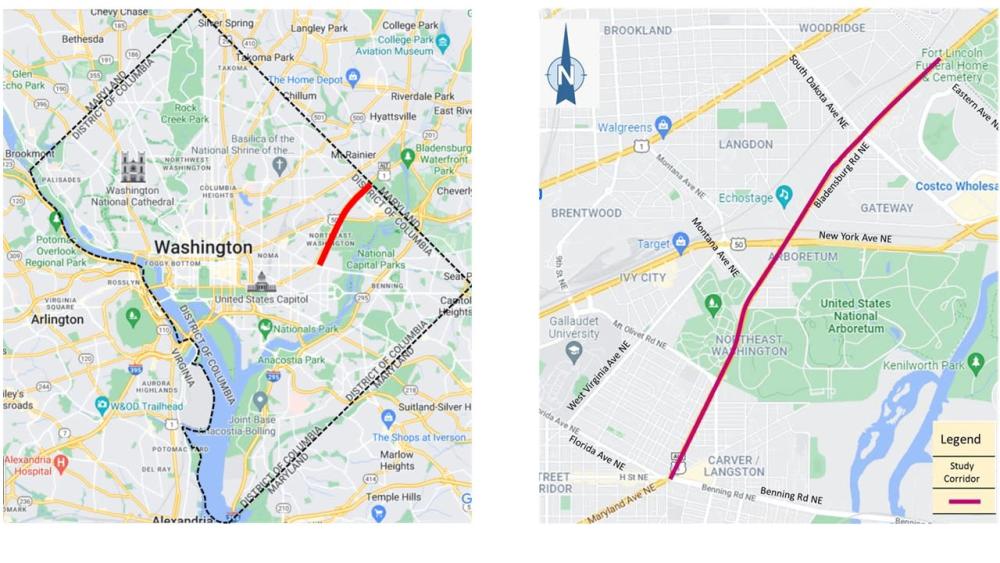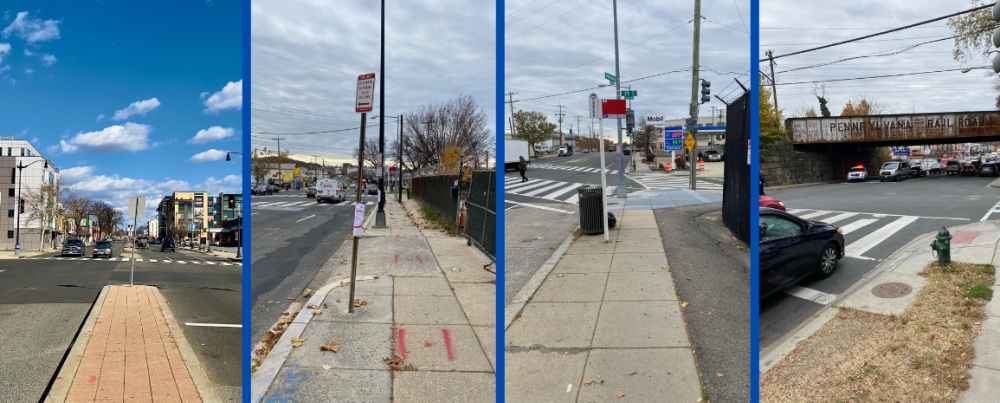Bladensburg Road, NE Multimodal Safety and Access Study
Bladensburg Road, NE Multimodal Safety and Access Study
Overview
The District Department of Transportation (DDOT) has completed a multimodal transportation study of Bladensburg Road, NE between Benning Road and Eastern Avenue. The study reviewed traffic safety and access issues for drivers, transit users, pedestrians and bicyclists. The study identified a range of traffic safety solutions which were included in two corridor design alternatives. An evaluation matrix was also developed to help the community and DDOT weigh the tradeoffs between the two design alternatives and select a preferred alternative to take to 30% design. Please view the final preferred alternative here.
Study Area
The study area is approximately 2.5 miles in length and includes all of Bladensburg Road between Benning Road, NE and Eastern Avenue, NE (the District-Maryland line). Bladensburg Road, NE is a six-lane roadway divided by a concrete median and is classified as a minor arterial. Several major streets bisect this corridor creating large, complicated intersections including Benning Road, 17th Street/Mt. Olivet Road, New York Avenue, Queens Chapel Road, South Dakota Avenue, and Eastern Avenue. The study area is located within Ward 5 and includes the Trinidad, Carver/Langston, Gateway, and Fort Lincoln neighborhoods. Bladensburg Road provides access to neighborhood businesses, commercial distribution centers, industrial uses, low and medium density residential, the Mount Olivet cemetery, and the National Arboretum.
The purpose of this study is to identify traffic safety and access issues along the corridor and recommend alternatives. The primary goals of this project are to:
- Develop a concept plan that promotes multimodal transportation safety and access for all roadway users, especially vulnerable users like pedestrians and bicyclists through modal separation, buffers, and traffic calming.
- Develop a balanced approach to the operations of the corridor through community and stakeholder involvement.
- Set a path forward for the development of future phases of the project including 30%/65%/90%/Final Plans and construction.


